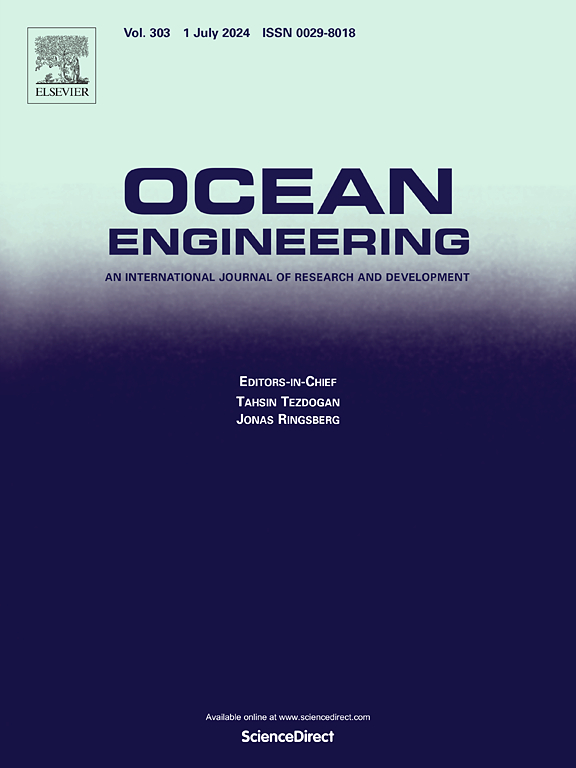Prediction method of propeller tip vortex cavitation inception based on bubble dynamics models and change-point detection
IF 5.5
2区 工程技术
Q1 ENGINEERING, CIVIL
引用次数: 0
Abstract
Due to the scale effect, tip vortex cavitation (TVC) is usually the first type of cavitation in real ship propellers. There is an urgent need in the engineering field for accurate prediction of the TVC inception. The traditional homogeneous flow cavitation model fails to accurately simulate the incipient cavitation flow because it ignores the nuclei evolution. To address this issue, a new method based on the Euler-Lagrange (E-L) frame bubble dynamics model was proposed to simulate propeller TVC inception. This method considers the compressibility of the liquid and the dynamic effects of nuclei motion, growth, and collapse, enabling precise simulation of the incipient cavitation field in propeller tip vortices. Furthermore, criteria for determining TVC inception were established by detecting the change point of the number of incipient cavitation bubbles. For a 7-blades high-skewed propeller, this method improved prediction accuracy by over 20 % compared to traditional methods. Finally, the dynamic evolution of microscopic nuclei motion, growth, and collapse clarified the cavitation inception mechanism. The influence of tip vortex flow on nuclei entrainment and capture under different advance coefficients was analyzed, providing guidance for accurate TVC inception prediction in engineering and ship critical speed.
基于泡动力学模型和变点检测的螺旋桨叶顶涡空化起始预测方法
由于尺度效应的存在,桨叶涡空化通常是实际螺旋桨中出现的第一种空化形式。工程领域迫切需要对TVC起始进行准确的预测。传统的均匀流空化模型由于忽略了核的演化,无法准确模拟空化初期流动。针对这一问题,提出了一种基于欧拉-拉格朗日(E-L)框架气泡动力学模型的螺旋桨TVC初始仿真方法。该方法考虑了液体的可压缩性和核的运动、生长和坍缩的动态影响,能够精确模拟螺旋桨叶顶涡的初始空化场。通过检测初始空化气泡数量的变化点,建立了判断TVC起始的判据。对于7叶大偏斜螺旋桨,该方法的预测精度比传统方法提高了20%以上。最后,通过微观核运动、生长和崩塌的动态演化,阐明了空化的形成机制。分析了不同推进系数下叶顶涡流动对核夹带和俘获的影响,为工程和船舶临界航速中精确的TVC起始预测提供了指导。
本文章由计算机程序翻译,如有差异,请以英文原文为准。
求助全文
约1分钟内获得全文
求助全文
来源期刊

Ocean Engineering
工程技术-工程:大洋
CiteScore
7.30
自引率
34.00%
发文量
2379
审稿时长
8.1 months
期刊介绍:
Ocean Engineering provides a medium for the publication of original research and development work in the field of ocean engineering. Ocean Engineering seeks papers in the following topics.
 求助内容:
求助内容: 应助结果提醒方式:
应助结果提醒方式:


